#Polyclad
Text






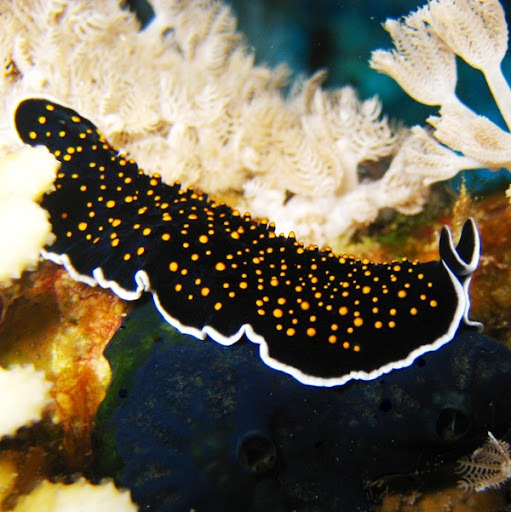




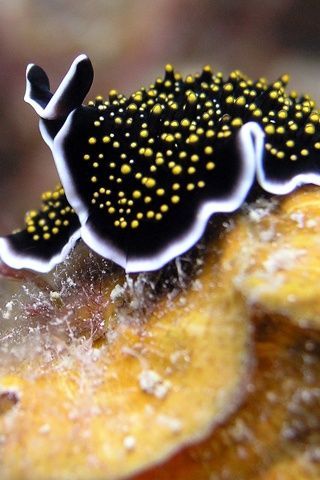

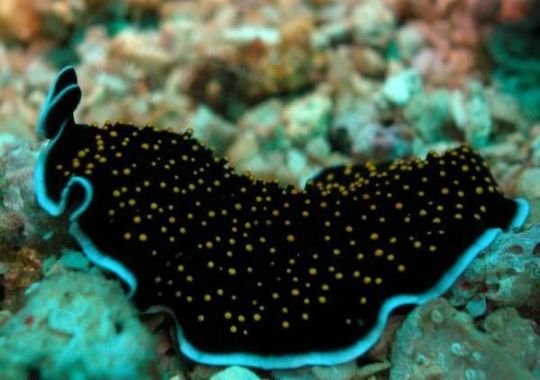
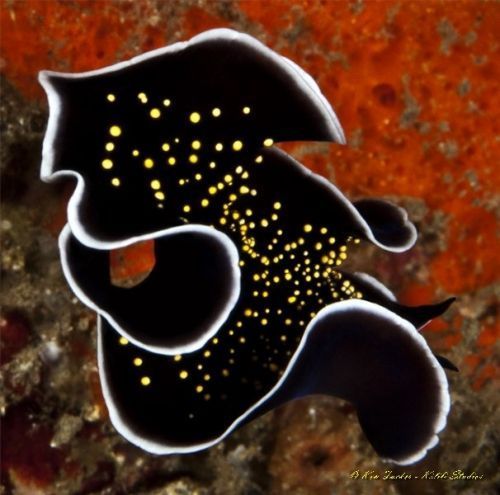

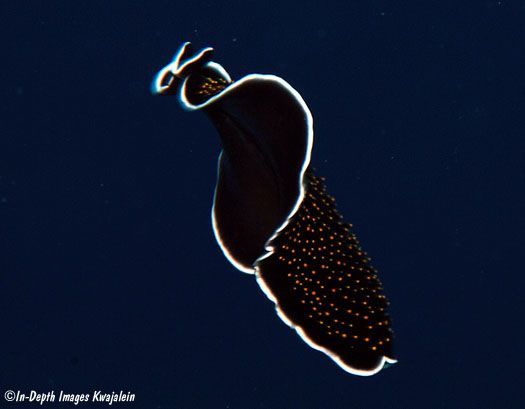

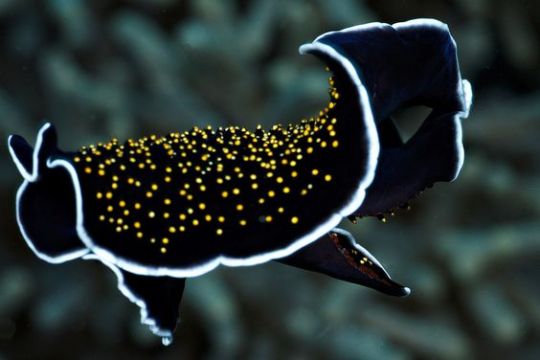
Червь плоский желтопятнистый (Thysanozoon havomaculatum) . Морской червь из класса ресничные черви, или турбеллярий. Принадлежит отряду Поликлад. Имеет уплощённое, овальное тело, покрытое ресничным эпителием. Длина этого симпатичного создания около 4 см, а толщина всего пару миллиметров. Передний конец его тела несёт пару щупалец. Мускулатура этого плоского червя многослойная, хорошо развитая, благодаря ей он способен подниматься в толщу воды за счёт ундулирующих движений краёв тела, а не только обитать на дне. Этот свободноживущий плоский червь питается преимущественно как хищник, водными беспозвоночными. Встречается в морях вокруг Австралии и Индонезии.
Yellow-spotted flatworm (Thysanozoon havomaculatum). A marine worm from the class of ciliated worms, or turbellarians. Belongs to the Polyclad squad. It has a flattened, oval body covered with ciliated epithelium. The length of this cute creature is about 4 cm, and the thickness is only a couple of millimeters. The front end of its body bears a pair of tentacles. The musculature of this flatworm is multi-layered, well developed, thanks to it it is able to rise into the water column due to undulating movements of the edges of the body, and not just live on the bottom. This free-living flatworm feeds primarily as a predator on aquatic invertebrates. It is found in the seas around Australia and Indonesia.
Источник:https://t.me/+t0G9OYaBjn9kNTBi, //www.webdive.ru/fotocat.php?t=11&id=20542&mode=view, http://mylongdongbay.blogspot.com/2007/07/save-ocean-cherish-marine-lives.html, /ru.pinterest.com/pin/630644754053053958/, http://www.akkiira.com/hiramushi/yoimiyaminohiramusi-swimming.html, //foxford.ru/wiki/biologiya/tip-ploskie-chervi?utm_referrer=https%3A%2F%2Fwww.google.com%2F.
#fauna#video#animal video#marine life#marine biology#nature#aquatic animals#Polyclad#Yellow-spotted flatworm#ocean#sea#corals#plankton#animal photography#nature aesthetic#видео#фауна#природа#Поликлады#Червь плоский желтопятнистый#океан#кораллы#планктон#море
825 notes
·
View notes
Text
Made an edit lol
17 notes
·
View notes
Text

Polyclad flatworm
Photo by: Unknown photographer
From: Natural History of Marine Animals
1949
164 notes
·
View notes
Text
Yellow-Spotted Flatworm (Thysanozoon nigropapillosum)
This is a Yellow-Spotted #Flatworm (Thysanozoon nigropapillosum). It is a #species of polyclad flatworms belonging to the family Pseudocerotidae. We spotted this lovely creature while diving off the coast of Fiji.
#underwater #wildlife #nature #sealife
This is a Yellow-Spotted Flatworm (Thysanozoon nigropapillosum). It is a species of polyclad flatworms belonging to the family Pseudocerotidae. We spotted this lovely creature while diving off the coast of Fiji.
Our dive guide referred to this enchanting invertebrate as a Yellow-Spotted Flatworm. However, it is also referred to as Gold-Speckled Flatworm, Yellow Papillae Flatworm, Yellow-Spotted…

View On WordPress
#ecotourism#Flatworm#marine biology#Nature#Scuba Diving#sea creatures#sea life#Underwater Video#wildlife
44 notes
·
View notes
Text

[https://www.inaturalist.org/observations/101192130]
Polyclad Flatworm || Prostheceraeus floridanus
Observed in United States
#animals#worm#bugs#slug#nature#wildlife#photography#water beast#who cooks for queue? who cooks for queue all?
4 notes
·
View notes
Text
Sorry but if transformers bang it’s not like how we do it. I’m thinking like polyclad flatworms. Penis fencing. Loser gets stabbed. With the penis.
5 notes
·
View notes
Text
Phylogenomics suggests that larvae are ancestral in polyclads, but not homologous to the trochophore
Platyhelminthes (flatworms) are a diverse invertebrate phylum that are useful for exploring life history evolution. Within Platyhelminthes, only two clades develop through a larval stage: free-living polyclads and parasitic neodermatans. Neodermatan larvae are considered evolutionarily derived, whereas polyclad larvae are hypothesized to be retained from the last common ancestor of Platyhelminthes - and Spiralia - due to ciliary band similarities among polyclad and other spiralian larvae. However, larval evolution has been challenging to investigate within polyclads due to low support for deeper phylogenetic relationships. To investigate polyclad life history evolution, we generated transcriptomic data for 21 species of polyclads to build a well-supported phylogeny for the group. We then used ancestral state reconstruction to investigate ancestral modes of development (direct vs indirect) within Polycladida, and flatworms in general. The resulting tree provides strong support for deeper nodes and we recover a new monophyletic clade of early branching cotyleans. Early branching clades of acotyleans and cotyleans possess diverse modes of development, suggesting a complex history of larval evolution in polyclads that likely includes multiple losses and/or multiple gains. Our ancestral state reconstructions in previous platyhelminth phylogenies also suggest that larval similarities between flatworms and other phyla are most likely convergently evolved http://dlvr.it/STwnRs
0 notes
Photo

Yellow papillae flatworm (Thysanozoon nigropapillosum) swimming at 40 ft (12 m) depth, Manta Ray Bay, Yap, Federated States of Micronesia.
photograph: Betty Willis | Wikipedia CC
51 notes
·
View notes
Photo
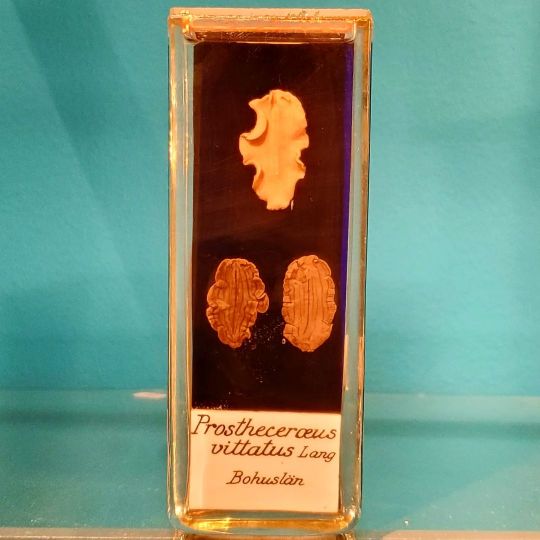
Taken 2022 22nd January, these are candy stripe flatworms (Prostheceraeus vittatus) @evolutionsmuseet being displayed. In Sweden, they occur on the west coast. They live in the intertidal to shallow subtidal zones hiding wherever possible, crawling over substrate using cilia, or gliding over it with sinuous motions. They will hunt other small invertebrates such as tunicates. #animal #animals #djur #wildlife #natur #naturliv #nature #naturalhistory #naturhistoriska #preservedspecimen #fauna #invertebrates #invertebrate #flatworm #flatworms #polyclad #polyclads #polycladflatworm #polycladflatworms #marineflatworm #marineflatworms #plattmaskar #plattmask #animalia #platyhelminthes #polycladida #euryleptidae #prostheceraeus #prostheceraeusvittatus #candystripedflatworm (at Evolutionsmuseet) https://www.instagram.com/p/CZaIIhiPNWY/?utm_medium=tumblr
#animal#animals#djur#wildlife#natur#naturliv#nature#naturalhistory#naturhistoriska#preservedspecimen#fauna#invertebrates#invertebrate#flatworm#flatworms#polyclad#polyclads#polycladflatworm#polycladflatworms#marineflatworm#marineflatworms#plattmaskar#plattmask#animalia#platyhelminthes#polycladida#euryleptidae#prostheceraeus#prostheceraeusvittatus#candystripedflatworm
1 note
·
View note
Text

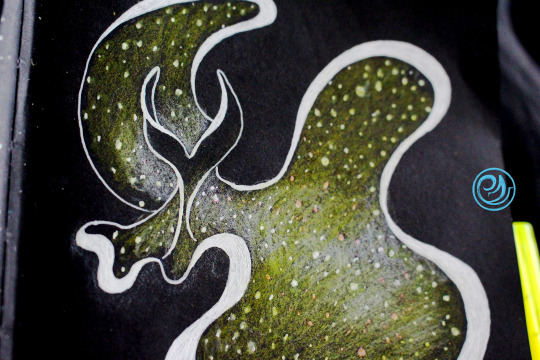

🌊🌊 🐚 BENTHIARY 🐚 🌊🌊 day 9-10
Thysanozoon nigropapillosum is a polyclad flatworm found in the Indo-Pacific. They have so many nicknames relating to their gold dots decorating their dark body; I think my favourite is gold speckled flatworm. I drew them as if they were an underwater nebula. They swim around in a hypnotizing undulating manner, and have these cute ears on their heads (kinda like snails?) ⭐️ 💫 🌟
I think I spent a lot of time narrowing down which flatworm I chose for my Benthiary prompt lol. There's too many that almost made the cut, like Pseudoceros susanae? What is even happening with them? Anyway, I've been busy with work a bit, but I'm still making time to do the rest of Benthiary _(。_°/

#art#art photography#traditional art#benthiary#benthos#marine art#marine life#flatworm#sea creatures#sea aesthetic#ocean life#ocean aesthetic#Thysanozoon nigropapillosum#art prompt#drawing prompt#colour pencils#ink illustration#illustration#artists on tumblr#illustrators on tumblr#scientific illustration#animal art#sketchbook#sketchbook art#art journal
21 notes
·
View notes
Photo

The on-line poker software program on the web site Polyclad-usa.com Website Info Poker online | judi online you participate in at will hold you for an arbitrarily selected seat and dining room table. On virtually any good no-cost on-line poker web site activities begin really routinely, possibly each
1 note
·
View note
Text
Flatworm mimicry
Fun fact! Did you know that certain flatworms are mimicked by certain types of fish?
youtube
This is speculated to be from the flatworms TTX (Tetrodotoxin) content. More research is being conducted on the topic, but mimicry like this can be used to infer that the TTX content in flatworms is a defense mechanism. (Although, some studies show that there are high concentrations of TTX in the pharynx, or feeding organ, which has had scientists hypothesize wether or not TTX is used in prey capture.)
Very cool!!
4 notes
·
View notes
Text


Polyclad flatworms
By: Unknown photographer
From: Natural History of Marine Animals
1949
12 notes
·
View notes
Video
Interesting find in my sump. Creeping along the filter pad in my sump I found this Polyclad Flatworm (Phrikoceros mopsus). This specimen is quiet large and must have been in my system for quite some time. Polyclad Flatworms can get larger than the one in my sump. They do have a bad reputation and this involves their diet. They pursue and consume live meaty prey and it's easy to understand why they have a sweet tooth for clams and snails. Judging by its color it's easy to see why I have not seen this guy in my display tank. Just which I knew how this dangerous critter got into my tank. #coral #coralreef #coralreefs #coralreeftank #coralreefaquarium #coralporn #coralcritters #coralpests #reef #reefer #reefaquarium #reefporn #reefkeeping #reefs #reeffish #reefaddict #reeftanks #reefaholiks #reeftank #reefgeek #marineaquarium #saltwatertank #saltwateraquarium #allmymoneygoestocoral #allmymoneygoestofish #aquarium https://www.instagram.com/p/CFSQCtQJ1Ui/?igshid=12txfguyv8pbb
#coral#coralreef#coralreefs#coralreeftank#coralreefaquarium#coralporn#coralcritters#coralpests#reef#reefer#reefaquarium#reefporn#reefkeeping#reefs#reeffish#reefaddict#reeftanks#reefaholiks#reeftank#reefgeek#marineaquarium#saltwatertank#saltwateraquarium#allmymoneygoestocoral#allmymoneygoestofish#aquarium
0 notes
Text
hey if anyone knows where I can get a copy of “Marine Flatworms: the world of polyclads” by Leslie J Newman please let me know!!
0 notes
Text
Critter Identification: Leopard Polyclad Flatworms
Critter Identification: Leopard Polyclad Flatworms

Bad Guys
First thing to note: These are not welcome in your tank, if you see them, time to take action!
Flatworms come in a range of colours, species, threat levels, swimming varieties, and some can look so exotic that you may secretly wish for an infestation. The Leopard Polyclad Flatworm, is not a species you would wish for in your aquarium.
There are many types of flatworm that can…
View On WordPress
0 notes